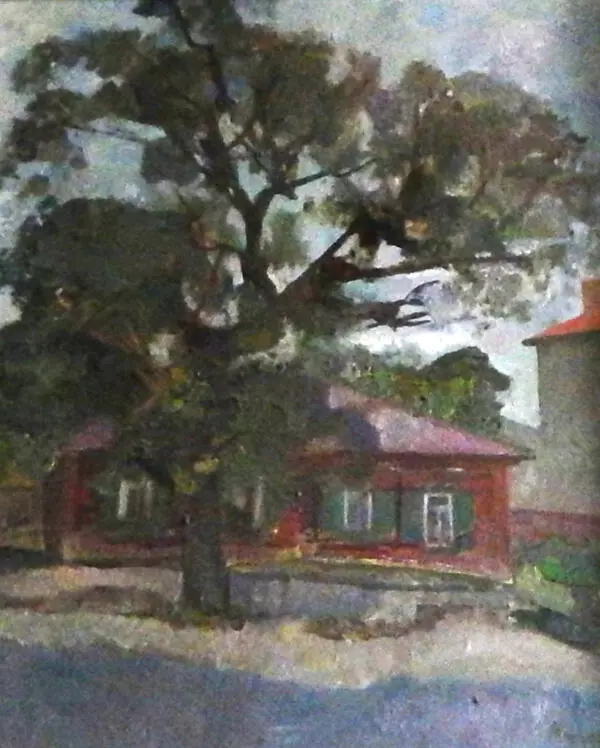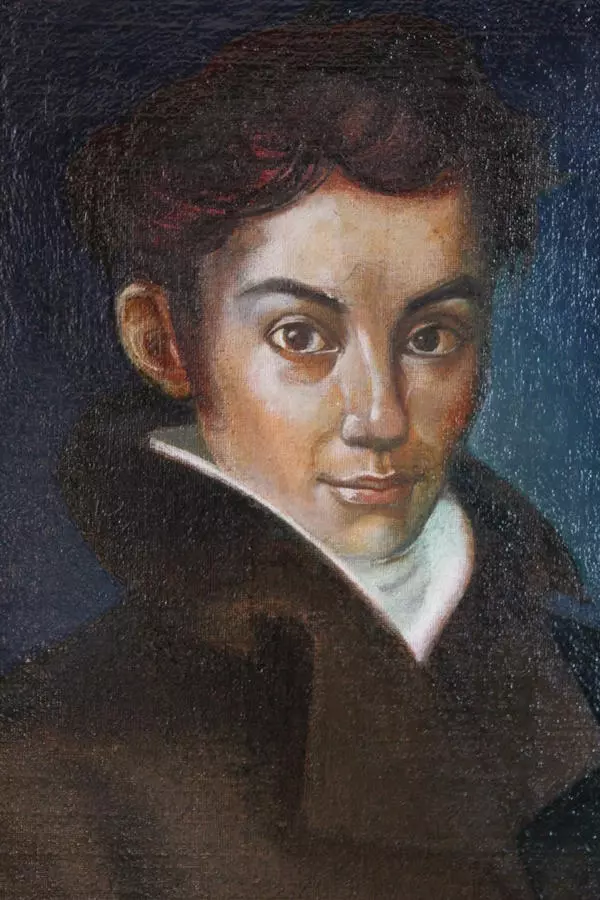Anna Bunina is considered the first Russian female poet. ‘No female writer in Russia had writing capabilities like she did’ - N. KaramzIn characterized Anna Bunina’s literary works. DerzhAvin also noted her “pleasant, crisp poems and a fine mind”. Her portrait was placed in the Assembly Hall of the Imperial Academy of Arts, next to the portraits of KaramzIn, DmItriev and GnEdich. Her coevals compared Bunina with SapphO, called her the Tenth Muse and North Corinne, and wrote odes in her honor.
The poetess was from the Bunin noble family, from which later Ivan Bunin - the first Nobel laureate in literature - came. Anna PetrOvna Bunina was born on 18 January 1774 in the village of UrUsovo, in RYAzhsky Uezd, RyazAn Governorate (now it’s ChaplYginsky District of LIpetsk region) in a noble family. She had her education at home: she had only general knowledge of grammar and arithmetics. She lived with her aunt until the age of 28, the aunt took care of her after the girl’s mother died. After the father’s death Anna BUnina could have her own money to spend. In 1802, in defiance of the opinion of her family members, she went to St. Petersburg and lived there alone — at that time this was an unheard-of audacity. BUnina was learning foreign languages, she was fond of reading and started writing poems. After several years she ran out of all her money which she spent on the professors who were teaching her.
Her earnings came from her literary works. These were not common fees for publications, but some other types of remuneration. Empress Elizabeth granted to Anna BUnina a small annual pension, and the poet also received an annuity from Maria FYOdorovna. Later, her patron Alexander ShishkOv, with the help of Kutuzov, obtained a pension for BUnina from the Emperor Alexander. In 1808 the first BUnina’s writing was published — a translation of the “Rules of poetry” by the Abbé Batteux, and in the next years she published several collections of her own poems and odes. In 1811, she was elected an honorary member of the society “Conversation of lovers of the Russian literature”.
Coevals treated her rather in different ways. Some considered Anna Bunina a mediocre poet and believed that the language of her high-toned odes was rather archaic. Others praised and supported the poet. So, poet K. BAtyushkov once wrote to GnEdich: “Her poem is missing philosophy and many other things, but it is a beautiful poetry.” In general, Anna Bunina was appreciated as one of the first female poets.
In 1815, Anna Bunina was diagnosed with a serious illness, breast cancer. The Emperor took it under his personal control to have the poetess sent to England for treatment. It was believed that only English doctors would be able to cure her illness. Anna Bunina lived in the Great Britain for 2 years. She stayed at Bath, a famous resort, and at Brighton and other places. However, Anna didn’t recover and in 1817 she came back to Russia. Her illness became even worse, Bunina stopped writing her poems and focused on translations. Often she had to work standing on her knees: any other posture was painful for her. In 1824 Anna Bunina left Moscow and went to live with her relatives in the country side. 4 years later she died, at the age of 54 in DenIsovka village, in RyazAn Governorate.
The poetess was from the Bunin noble family, from which later Ivan Bunin - the first Nobel laureate in literature - came. Anna PetrOvna Bunina was born on 18 January 1774 in the village of UrUsovo, in RYAzhsky Uezd, RyazAn Governorate (now it’s ChaplYginsky District of LIpetsk region) in a noble family. She had her education at home: she had only general knowledge of grammar and arithmetics. She lived with her aunt until the age of 28, the aunt took care of her after the girl’s mother died. After the father’s death Anna BUnina could have her own money to spend. In 1802, in defiance of the opinion of her family members, she went to St. Petersburg and lived there alone — at that time this was an unheard-of audacity. BUnina was learning foreign languages, she was fond of reading and started writing poems. After several years she ran out of all her money which she spent on the professors who were teaching her.
Her earnings came from her literary works. These were not common fees for publications, but some other types of remuneration. Empress Elizabeth granted to Anna BUnina a small annual pension, and the poet also received an annuity from Maria FYOdorovna. Later, her patron Alexander ShishkOv, with the help of Kutuzov, obtained a pension for BUnina from the Emperor Alexander. In 1808 the first BUnina’s writing was published — a translation of the “Rules of poetry” by the Abbé Batteux, and in the next years she published several collections of her own poems and odes. In 1811, she was elected an honorary member of the society “Conversation of lovers of the Russian literature”.
Coevals treated her rather in different ways. Some considered Anna Bunina a mediocre poet and believed that the language of her high-toned odes was rather archaic. Others praised and supported the poet. So, poet K. BAtyushkov once wrote to GnEdich: “Her poem is missing philosophy and many other things, but it is a beautiful poetry.” In general, Anna Bunina was appreciated as one of the first female poets.
In 1815, Anna Bunina was diagnosed with a serious illness, breast cancer. The Emperor took it under his personal control to have the poetess sent to England for treatment. It was believed that only English doctors would be able to cure her illness. Anna Bunina lived in the Great Britain for 2 years. She stayed at Bath, a famous resort, and at Brighton and other places. However, Anna didn’t recover and in 1817 she came back to Russia. Her illness became even worse, Bunina stopped writing her poems and focused on translations. Often she had to work standing on her knees: any other posture was painful for her. In 1824 Anna Bunina left Moscow and went to live with her relatives in the country side. 4 years later she died, at the age of 54 in DenIsovka village, in RyazAn Governorate.




